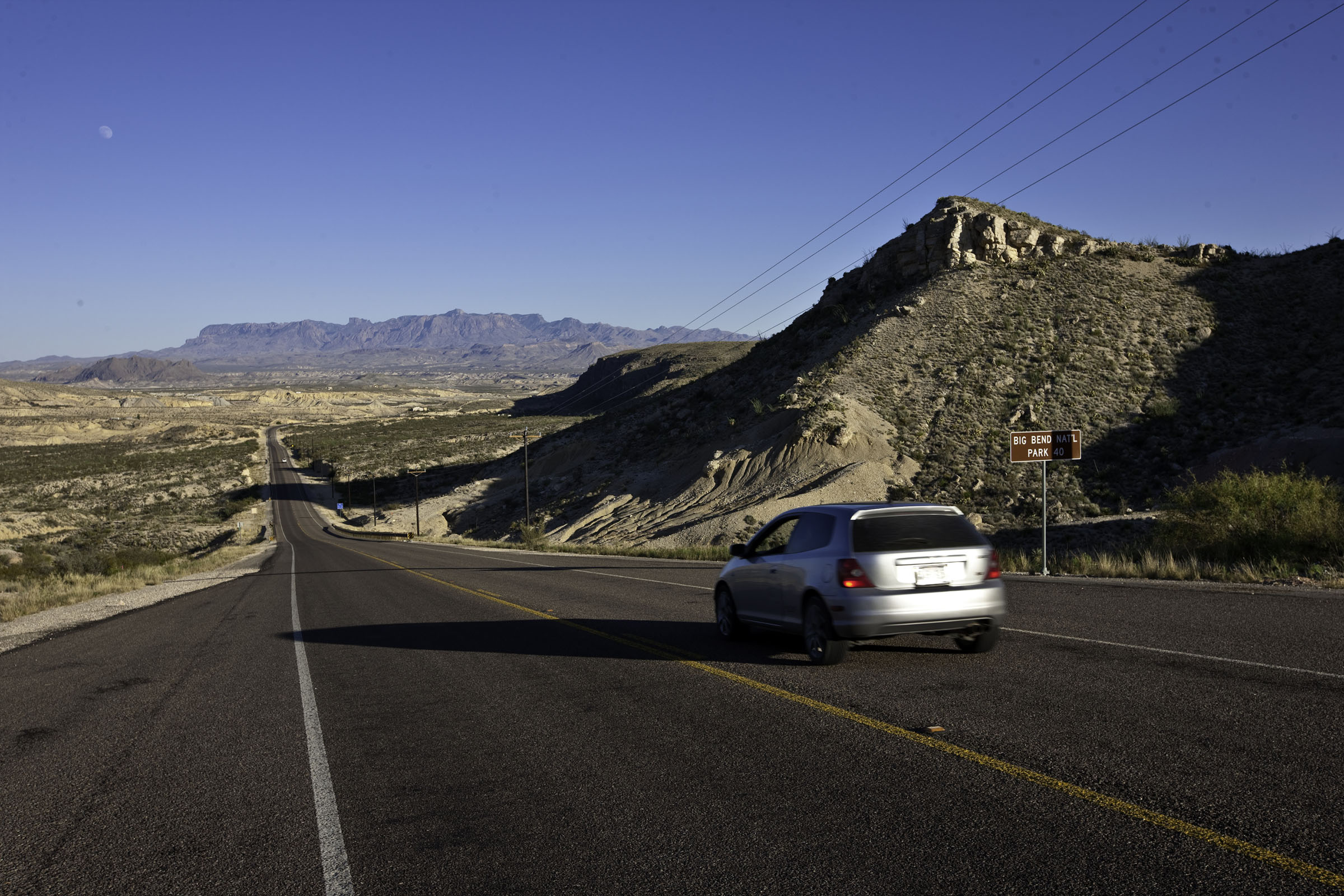
Farm-to-Market Road 117 near Terlingua. Photo by J. Griffis Smith
Getting in a last-minute road trip before summer vacation ends? Along with the fun traveling has to offer also comes a responsibility to protect yourself and others from the dangers of traveling, especially in August, the hottest time of year in Texas.
Triple-digit temperatures and dry surroundings can increase dangerous conditions. In fact, according to the Centers for Disease Control and Prevention, 1,400 people have died from heat-related health issues in Texas from 1999 to 2019.
Texas heat is no joke and should be taken into consideration when planning outdoor activities. Since properly preparing for a trip can reduce the likelihood of an emergency, here are a few tips to keep in mind for any last-minute summer excursions.
Prepare your vehicle—and yourself—for a road trip
Before hitting the road, there are a few things you should do to get ready, including checking in on yourself. “Triple A recommends that the first thing to do is to make sure that you yourself are prepared for the road trip—getting enough sleep, making sure you planned out your route, and planning out your stops,” says AAA’s public affairs specialist Joshua Zuber.
A few days before embarking, the association highly recommends drivers check the battery, tires, and engine of their car. Batteries should be tested every year after reaching three years of age to avoid an unexpected battery failure. It’s important to note that a reduced battery life is common in hotter climates, which means travelers should make sure their vehicle battery is equipped to take on the Texas sun.
Although it can be tempting to pack your car to the brim to avoid leaving behind any essentials, travelers shouldn’t overload their vehicle. It can lead to one of the most dangerous conditions: tire failure due to the tire overheating. To ensure this doesn’t happen, drivers should check their vehicle’s owner’s manual for the maximum operating weight as well as the vehicle’s tire pressure and the tread depth.
“The callouts we get most of are battery issues, engine trouble, and tire problems, which is why we recommend you check all three before heading out,” Zuber says.
Prepare for your time on the trails
Texas offers beautiful trails for locals and visitors to the state, but hikers need to be ready before making their way out. August temperatures can reach an uncomfortable level, and without proper preparedness, heatstroke can result.
To protect yourself and take the measures necessary to have a safe and enjoyable hike, Texas Parks and Wildlife recommends knowing your limit, such as knowing how long you can withstand the heat and when you might need to take a break, plus making sure your body is equipped to handle the hike. Visit the park you plan to visit’s website and identify the difficulty levels of the trails offered and ask for recommendations that would best suit your abilities.
In addition, those visiting the trails should pack a generous amount of water, wear suitable clothing—including loose fitting, breathable attire, hiking shoes, and a hat—apply plenty of sunscreen, and have a first-aid kit ready in case of an injury. Hikers should be weary of dangerous temperatures and pick an appropriate time to head out, such as early in the morning before temps rise past 90 degrees.
“You should drink about 16 ounces of water for every hour that you’re in the heat,” says Corey Chandler, a spokesperson for Texas Parks and Wildlife, adding your mustn’t forget your furry friends. “And if you’re bringing a pet, make sure to pack a good amount for them, too. If it’s hot for us, it’s hot for them.”
In addition to enough water, pets need have a spot in the shade. If temperatures are too high, keep them indoors, Chandler says.
When it comes to planning your hike, remember that cellphones should not be relied on due to the potential lack of reception. Have a way to communicate and notify someone of your whereabouts in case of an emergency.
If you begin to feel sick and notice symptoms of heat illness, such as nausea or vomiting, a change in your mental state, or a throbbing headache, try to call 911 immediately.
Prepare for your time on the water
According to the Galveston Island Beach Patrol, one of the best things to do before taking a dip in the water is making sure you know how to properly swim and never overestimate your abilities. Swimming near a lifeguard, in addition to swimming with a partner, can reduce your chances of drowning. This way, you can effectively communicate that you need assistance if something happens to go wrong.
“Specifically on the Texas Coast, our number-one danger on beaches is going to be rip currents, which are responsible for a significant amount of drowning instances,” says Peter Davis, chief of the Galveston Island Beach Patrol. “These happen around structures, so it’s important for people to stay clear of them.”
Before heading out to the beach, lake, or pool, Davis says to establish a designated “water watcher” who maintains situational awareness.
As with most activities that are enjoyed outside, it’s a necessity to drink plenty of water and wear sunscreen when out at the beach. “To protect yourself, always choose broad spectrum sunscreen rated from 15 to 50 SPF, or clothing that covers your skin, and reapply sunscreen regularly throughout the day,” according to information provided on the Galveston Island Beach Patrol website.
Although all the fun seems to happen under the sun, it might be time to head indoors if you begin to feel weak, dizzy, and nauseous.
By following these tips and properly preparing for your trip, you can stay safe and enjoy the final days of summer vacation while they last.








